Cordless jigsaw purchasing advice: how to choose the right product
- What you need to know
- A jigsaw is a versatile tool that saws through wood, metal, and plastic in no time.
- It is particularly handy for cutting curves or stenciled designs.
- Cordless jigsaws are a pleasure to use even outside of your workshop.
- Mind the stroke rate and height when purchasing.
Reciprocated love
A jigsaw is a must-have for every well-equipped workshop. It belongs to the handsaws and is characterized by a wide range of applications. For curved shapes, the jigsaw is usually the preferred tool. Medium thick wooden boards or smaller slats can also be cut with this electric tool. If you want to be independent of a power outlet, a cordless jigsaw is the right choice for you.
The electric motor is the heart of a jigsaw as it drives the blade. By creating voltage, a rotation is transmitted to the gear. The gear converts the rotation into mechanical lifting to move the blade up and down. Most jigsaws have a quick clamping system that allows an easy change of blades without any extra tools.
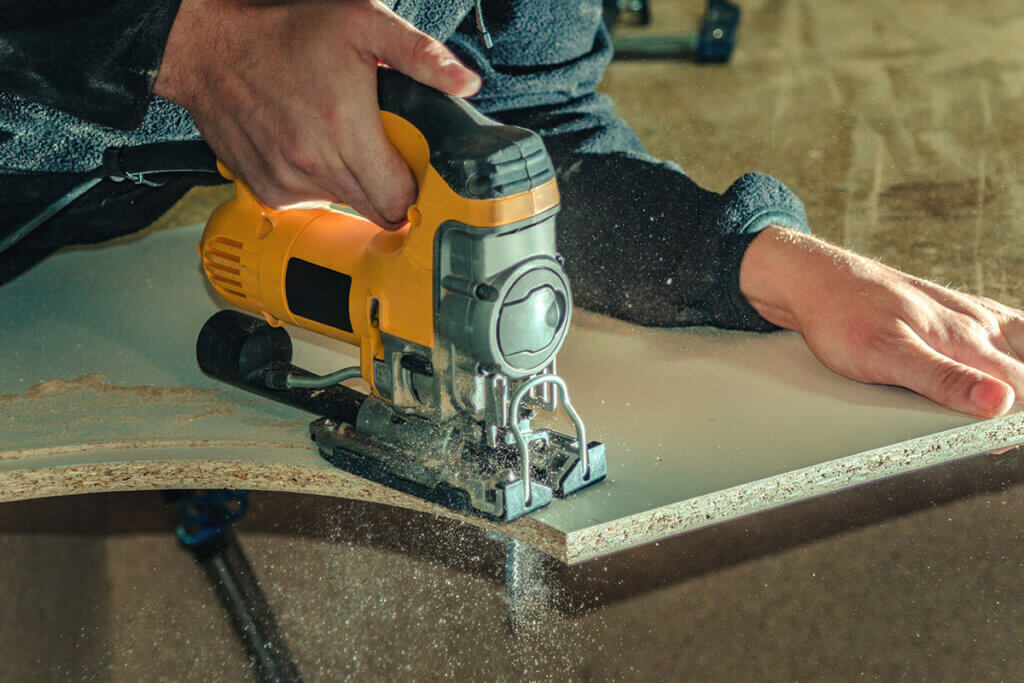
On the bottom of a jigsaw is a base plate. If it’s placed level on a workpiece, the tool is automatically at a right angle which facilitates precise cutting. To cut miter cuts, the cordless jigsaw must be placed at an angle. Most models have a lever or adjusting screw for this purpose.
Why chose a cordless jigsaw?
Cordless jigsaws usually cost a little more than conventional ones, which poses the question: do I really need a cordless model? The most decisive argument for it is the flexibility. A cordless jigsaw can be used everywhere and is not dependent on an outlet. If, however, you work mostly from your own workshop, a corded model might be the better option.
But even if you work in a place with an outlet, a cordless jigsaw has one great advantage: there is no annoying cable dangling in your way. For very precise cuts with a lot of turning points, a cable can quickly reach its limits and obstruct your movement. Managing your way around hard-to-reach areas will also be easier with a cordless jigsaw.
Nowadays, most manufacturers of battery-powered tools use batteries that are compatible with all their tools. Take this into consideration if you already have other tools from a certain company, because batteries of competitors can usually not be used.
Advantages
- Very flexible
- Easier access to hard-to-reach areas
- Independent of nearby outlets
- No cable in your way
Disadvantages
- Lower output than corded models
- Operation time depends on battery level
- More cost-intensive
Important purchase criteria
Clean and precise cuts: that’s what DIYers want from a cordless jigsaw. To achieve this, the tool must be powerful and it must comfortable to hold. Look out for features such as the pendulum stroke.
Battery
In the case of cordless jigsaws, the battery is, naturally, of great importance. Almost all modern devices use a compact and powerful lithium-ion battery. There is no memory effect to worry about with these models. This means that the battery still has the same charge even after a long period of non-use.
The performance of cordless jigsaws depends on the voltage of their batteries. Most often, they have 18V. Few machines require more than 20V. Just as rare are weak motors that rely on 10 or 12V. If you use one battery for multiple tools, you need to keep in mind that an 18V-jigsaw requires an 18V-battery.
In addition to the voltage, the capacity is another important parameter. It is specified in ampere-hour (Ah) and describes how long the device can be used without recharging. A cordless jigsaw with five ampere-hours, for example, will work much longer than one with a capacity of only two ampere-hours. Which battery capacity is right for you depends on your plans. If you want to saw for a long time without interruption, you need to choose a powerful battery with a high capacity or buy an exchangeable battery. This, however, would mean additional costs.
Stroke rate and height
Stroke rate and height are most significant for the effectiveness of a cordless jigsaw. The stroke height indicates the distance that the saw blade travels with each stroke. Professional devices achieve stroke heights of up to 26mm. For most DIY projects, around 20mm are sufficient. The stroke height should not be confused with the cutting depth. This results from the stroke height and the length of the saw blade.
In addition to the stroke height, it is also necessary to look at the stroke rate. This is the speed of the saw. If you want to cut efficiently and quickly, you need a device with a high stroke rate. The best cordless jigsaws lift and lower the saw blade up to 3000 times per minute. A sufficiently powerful jigsaw should have a stroke rate of at least about 2400 strokes per minute (spm).
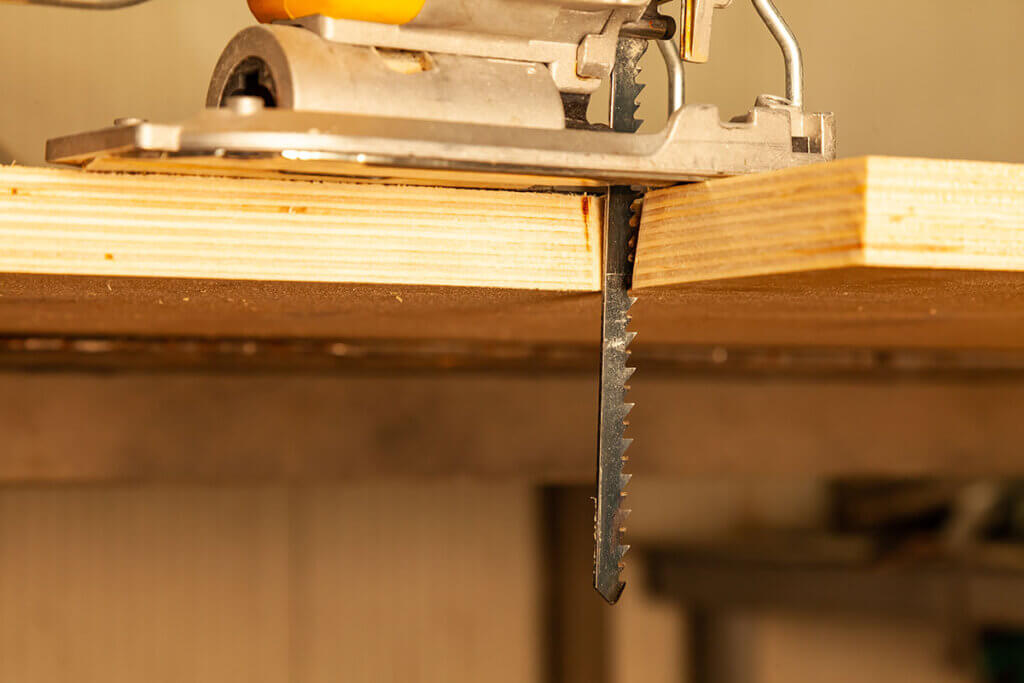
Ergonomics
Working with a jigsaw is demanding in the long run. The vibrations of the device put strain on the arm and shoulder and lead to signs of fatigue. When buying a cordless jigsaw, you should therefore ensure that it is comfortable to use. A rubberized, ergonomic handle is the minimum requirement. For longer work, a lightweight and compact model is recommended. Many cordless jigsaws weigh between 3.3 and 5.5 pounds (1.5kg and 2.5kg) and are therefore not too heavy. Powerful models with a large battery weigh around 9 pounds (4kg). This requires more strength for handling.
There are two common designs for cordless jigsaws: models with a bow handle and those with a knob handle. Machines with a bow handle are primarily chosen by DIYers because they fit securely in the hand and thus support straight cuts in particular. The on/off switch on cordless jigsaws with a bow handle is also often easier to reach than on a model with a knob handle. A machine with a bow handle is therefore recommended for beginners.
Professionals often rely on jigsaws with a knob handle. This handle allows better maneuvering of the jigsaw. Unlike the bow handle, the knob doesn’t block the view of the cutting line. That’s why they’re the better choice for complicated tasks such as curved cuts.
Other handy features
Decent jigsaws offer a number of settings that facilitate the handling and improve the sawing. The versatility of a jigsaw allows you to manage a great number of different projects.
Pendulum stroke
Many jigsaws are equipped with a pendulum stroke. This is a power function, so to speak, that enables faster sawing. In addition to the up-and-down movement, the pendulum stroke allows the saw blade to pivot forward and backward. This makes it easier for chips to fall out of the cutting channel and makes sawing more effective. Three different levels can be selected on most pendulum stroke devices.
Since the cutting is much coarser when cutting with a pendulum stroke, fine work should not be done with it. If you want to achieve a high-quality cut, the pendulum stroke should be switched off.
When is it advisable to switch on the pendulum stroke?
A high pendulum stroke is recommended for working with hard and thick wood. However, this can result in severe tear-out along the cutting edges. The pendulum stroke should not be used for thin work pieces.
Speed adjustment
When using a jigsaw, it’s not always necessary to saw at full power. The most accurate cut is best achieved at a low speed. On many jigsaws, there is an adjusting wheel that can be used to set the speed. Other models have a speed trigger in the on/off switch. The harder you press, the faster the blade moves.
Changing the saw blade without tools
With modern cordless jigsaws, the saw blade can be changed without tools. Systems with screws, on the other hand, are outdated. Exactly how the blade is changed can vary from tool to tool. Most jigsaws are equipped with a quick clamping system that can be easily opened and closed.
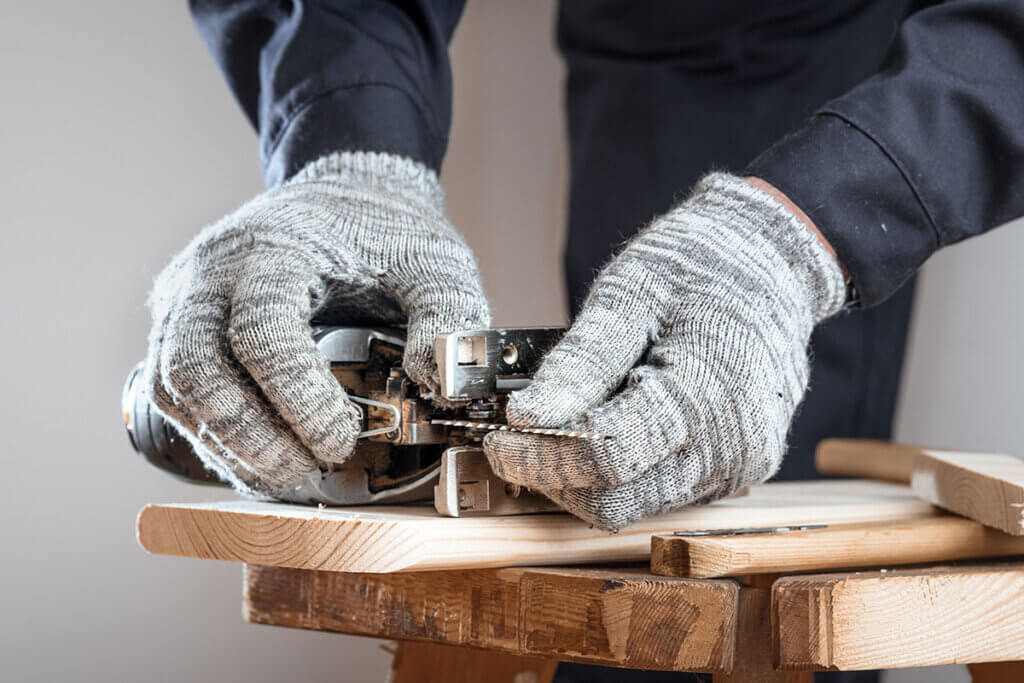
LED light and laser guidance
Not every working environment is sufficiently well lit. In such cases, it is convenient if the cordless jigsaw has an integrated LED light that sufficiently illuminates the work piece. Some devices feature laser guidance, which supports more precise cuts and eliminates the need to set a mark.
Miter cuts
Good cordless jigsaws have an adjustable base plate. This feature allows you to set specific bevel angles and thus saw miter cuts. On some devices, the base plate can only be bevelled by 45 degrees. Other models allow continuous adjustment.
Dust extraction
With many devices that involve working with wood, a dust extraction system is very useful. The chips are then ejected to the rear or to the side, which guarantees a clear view of the cut. In most cases, an industrial vacuum cleaner can be connected by means of an adapter, so there is no need to even sweep the workshop after work.
Anti-splinter guard
When sawing delicate and easily splintered work pieces, chipping often occurs along the cut. These splintered areas look anything but pretty. Many manufacturers of cordless jigsaws therefore have anti-splinter guards in their range. These transparent inserts for the jigsaw foot prevent the tear-outs.
Choosing the right saw blade
No matter how powerful a jigsaw is, without the right saw blade, the result will not be satisfactory. There are universal and special saw blades. The former are ideal for anyone who works on changing materials. However, if you only saw wood, you should work with a special saw blade for this material. Whether stone, wood, metal, plastic, or ceramics — there is a suitable saw blade for every material.
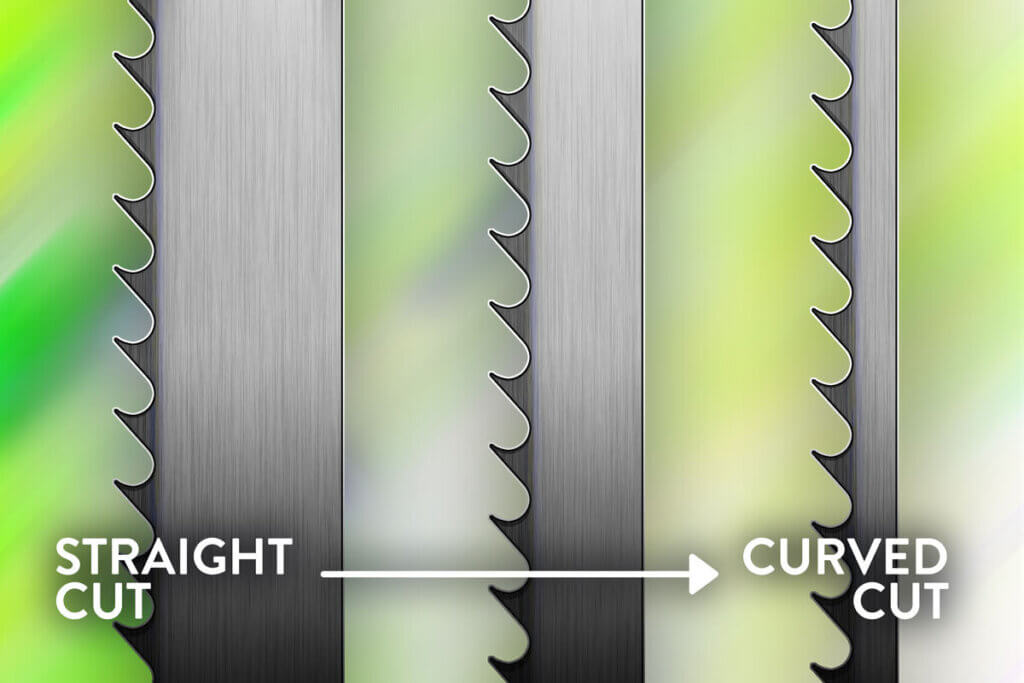
Also, when choosing a saw blade, it makes a difference whether you need to make a straight cut or a curved cut. For a straight cut, you should choose a blade that is as wide as possible, as this makes it easier to hold the cutting line. For curvy cuts, this is not an advantage. The curvier the cut pattern, the narrower the saw blade should be.
The following factors are also important when looking for the right saw blade:
Shaft type: there are two common types of saw blade holder, T-shaft and U-shaft. The “T” refers to the shape, whereas “U” stands for “universal”. Saw blades are attached by clamping the shank into the holder. Check which shank types are suitable for your jigsaw before buying new saw blades. The T-shank is the most common for cordless jigsaws.
Cutting quality: the cut does not have to be particularly fine for every job. In some cases, what counts most is that the cut is done quickly. For this reason, saw blades are available in different qualities. A coarse blade is suitable for cutting through roof battens or firewood, while a fine saw blade should be used for parquet flooring. The more teeth a saw blade has, the finer the cut.
Tooth geometry: the teeth of saw blades differ in their geometry. Jigsaw blades for wood have interlocked teeth that allow them to saw very well through the material. Conically ground teeth cut particularly clean edges and are used when sawing plastic. Milled teeth are required for sawing metal.
Correct use of a cordless jigsaw
The jigsaw has a reputation among many DIYers for being imprecise. When simply shortening wooden slats and boards, it is often not necessary to place too much emphasis on accuracy. For finer work, such as on furniture, on the other hand, the cut should be as clean as possible. Jigsaws, however, have a tendency to splinter the wood due to the way they work.
The teeth of the saw blade point upward, thus the actual cut is made only when the blade moves upward. As a result, the cut on the underside of a work piece is very clean, but the picture on the top side is different: wood fibers are torn out to the left and right of the cut, and the result looks unprofessional and unappealing.
To hide any splintering, you should always turn the work piece over so these imperfections are not visible from the front or top. For fixed objects that cannot be turned, it is advisable to work from below. Also be careful not to cut too quickly and with too much pressure. Instead, place emphasis on calmness and precision.
To prevent splintering, many craftsmen use a trick: they tape the cut edge with wide tape. High-quality, masking tape or PVC tape is used for this purpose. The masked cut can then also be cut from above. Before masking, make sure the tape doesn’t leave any residue on surfaces. The professional alternative is an anti-splinter guard.
Image 1: © sergey0506 / stock.adobe.com | Image 2: © Aleksandr Kondratov / stock.adobe.com | Image 3: © alexx_60 / stock.adobe.com | Image 4: © FinalCheck

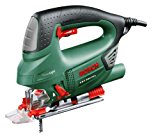

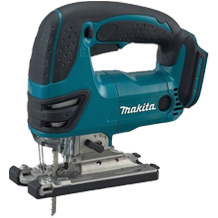
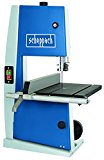

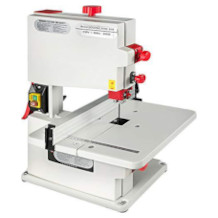
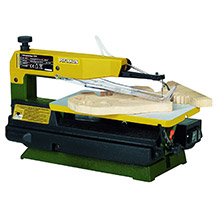
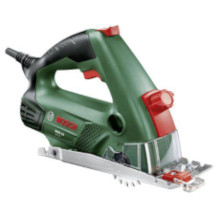

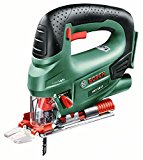
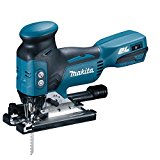
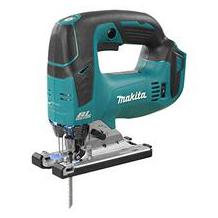
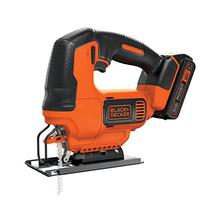
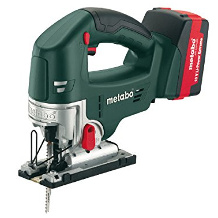
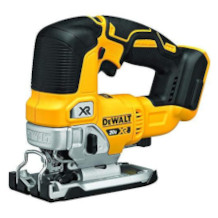
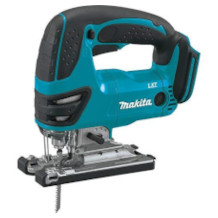

 4,323 reviews
4,323 reviews

